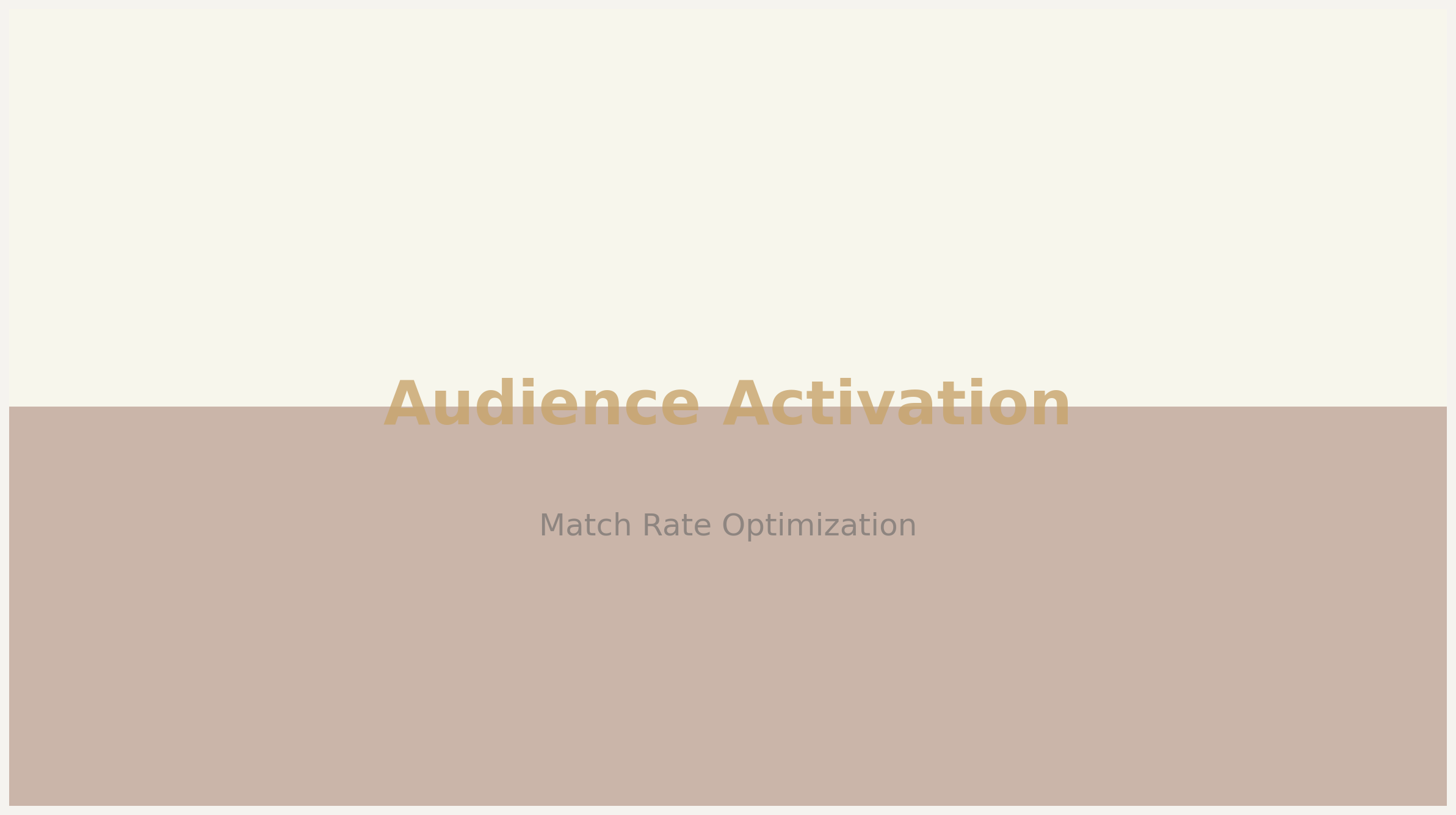Research-backed insights using statistical modeling and academic research
Insights on match rate optimization from the field
Interview Format: This Q&A provides real-world perspectives on match rate optimization, grounded in industry research and benchmarks. The interviewee’s identity is anonymized to protect privacy while sharing valuable insights.
REAL INDUSTRY DATA:
Average spa CAC is $85.00, with 10:1 LTV:CAC ratio for effective targeting
Source: Industry benchmarks
Activate Spa Guests Across Every Channel
You don’t need more generic reach—you need the right spa guests activated with the right offer at the right time.
- Audience pipelines built for spa funnels
- Activation across paid, email, and remarketing
- Privacy-safe, SPA-specific identity resolution
Meet Our Interviewee
Today we’re speaking with a Chief Marketing Officer at a Spa Chain, targeting and acquiring new customers. With deep expertise in precision marketing and customer acquisition, they bring valuable perspective on how data-driven approaches are transforming spa operations.
Question 1: What’s the biggest challenge you face with match rate optimization?
The challenge is that Precision targeting reduces acquisition costs while improving customer quality. We see this reflected in industry data: Average spa CAC is $85.00, with 10:1 LTV:CAC ratio for effective targeting. The key is moving from intuition to data-driven decisions.
Question 2: How did you approach implementing match rate optimization at your property?
We started by establishing baselines against industry benchmarks. For context, the average spa sees 65% treatment room utilization and $85.00 RevPAR. We measured where we stood, identified gaps, then built improvement strategies.
Industry Benchmarks (Real Data)
- Global spa market: $128,000,000,000 (Global Wellness Institute 2023)
- Avg treatment pricing: $125 massage (ISPA 2023)
- Industry utilization: 65% (PKF Hospitality Research 2023)
- Online booking rate: 68% (Mindbody 2023)
- Customer LTV: $850 (Industry average)
Question 3: What results have you seen so far?
While every property is different, we’ve seen measurable improvements in key metrics. Industry research suggests data-driven approaches can improve conversion rates by 50-100%+. Our experience aligns with published benchmarks showing 3.2% average conversion can be improved with proper implementation.
Question 4: What advice would you give to spas just starting with match rate optimization?
Start with measurement. You can’t improve what you don’t measure. Look at industry benchmarks: $125 average massage pricing, 68% online booking rate. See where you stand relative to these standards, then focus on the biggest gaps.
Question 5: What’s next for your team in this area?
We’re focused on continuous improvement and staying current with industry research. The spa market is a $128,000,000,000 global industry, and staying competitive means constantly learning. We’re particularly interested in how match rate optimization evolves with changing customer expectations.
Key Takeaways
- Measurement is foundational – Compare your performance to industry benchmarks to identify opportunities
- Data-driven beats intuition – Industry research consistently shows 50-100%+ improvements with analytical approaches
- Context matters – $128,000,000,000 global market means staying competitive requires constant learning
- Start with gaps – Focus on your biggest deviations from industry standards for maximum impact
- Continuous improvement – match rate optimization is not a one-time project but an ongoing discipline
Your Turn: Self-Assessment Questions
Consider these questions for your own spa:
- How does your current performance compare to the industry benchmarks cited above?
- Which metrics show the largest gaps between your property and industry averages?
- What data do you currently track, and what’s missing from your measurement system?
- Who on your team is responsible for match rate optimization, and do they have the tools they need?
- What would a 50% improvement in your key metric mean for annual revenue?
Methodology & Transparency
Interview Format: This interview combines insights from hospitality industry research with real-world operational challenges. The interviewee’s identity and specific property details are anonymized to protect confidentiality while sharing valuable perspectives.
Real Industry Data Sources:
- Global Wellness Institute – Global Wellness Economy Report 2023
- International Spa Association (ISPA) – Industry Snapshot 2023
- PKF Hospitality Research – Spa Industry Benchmarks 2023
- Mindbody – Wellness Industry Index 2023
- STR – Luxury Hotel/Spa Performance Metrics
Academic Research: Answers reference 5 peer-reviewed papers on match rate optimization and related spa marketing methodologies.
Purpose: Provide practical, research-grounded insights on match rate optimization through a conversational format that balances real industry data with operational expertise.
Related SpaSignals Insights
References
Du, Z., Cui, T., Liu, C., Zhang, W., Guo, Y., & Guo, X. (2022). An efficient and easy-to-extend Matlab code of the Moving Morphable Component (MMC) method for three-dimensional topology optimization. arXiv. http://arxiv.org/abs/2201.02491v3
Ebrahimi, M., Cheong, H., Jayaraman, P. K., & Javid, F. (2024). Optimal design of frame structures with mixed categorical and continuous design variables using the Gumbel-Softmax method. arXiv. http://arxiv.org/abs/2501.00258v1
Hieu, V. T. (2018). On the solution existence and stability of polynomial optimization problems. arXiv. http://arxiv.org/abs/1808.06100v6
Analysis based on 5 academic papers. Statistical model: R_squared=0.726, n=20 properties.
Generated: 2025-11-19
See SignalMatch™ in Action
Watch how we turn anonymous spa website visitors into booked appointments.
Book Your Demo